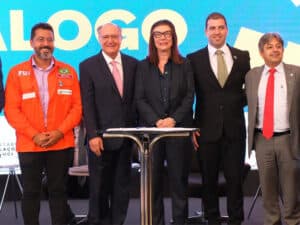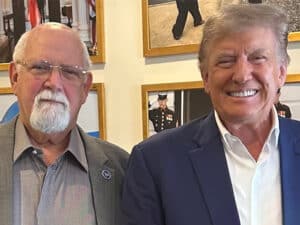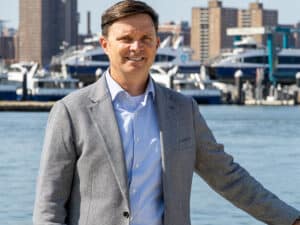
Bureau Veritas and Rio University set up joint development center
Written by Classification society Bureau Veritas and COPPE/UFRJ, the ocean engineering department of Brazil’s Universidade Federal do Rio de Janeiro, are to set up a joint development center. The move is intended to speed the development of tools and technical requirements needed to facilitate Brazil’s expansion into deep offshore oil exploitation.
Classification society Bureau Veritas and COPPE/UFRJ, the ocean engineering department of Brazil’s Universidade Federal do Rio de Janeiro, are to set up a joint development center. The move is intended to speed the development of tools and technical requirements needed to facilitate Brazil’s expansion into deep offshore oil exploitation.
Pierre Besse, Vice-President Research and Development for Bureau Veritas says, “We will initially have four people working full time on the Rio university development group, so we can marry up the modeling strengths and structure experience of Bureau Veritas with the academic and practical expertise in the offshore sector in Brazil. We expect to see real useable tools and new software and technical developments to help get the next generation of floaters and deep water subsea systems on stream quickly and safely. The ocean basin at COPPE/UFRJ is equipped with sophisticated multi-directional wave generators and the deepest model basin in the world and we can use those to develop safe and clean technologies to promote deepwater offshore energy exploitation. The projects will be mainly linked to the development of technology for the exploration and production of the recently discovered pre-salt fields in ultradeep waters in the offshore Santos Basin in Brazil.”
Segen Farid Stefen, Director of Technology and Innovation of COPPE/UFRJ, said that the first development project is already under way,” tackling some important aspects in the evaluation of DP (Dynamic Positioning systems) for oil shuttle tankers, in connection with off-loading operations offshore.”
Bureau Veritas has successful cooperation agreements with nineteen leading universities in nine other countries.
“Working with universities is a win-win situation,” says Mr. Besse. “The universities can engage with the real technological problems facing society and we can tap into high-level academic groups, sharing ideas and expertise and also broadening our cultural outlook so that we can think and approach problems in a truly global way. The results so far are impressive. For example, working jointly with Harbin University, we have produced a fully coupled analysis of deep water floating systems, which helps develop TLP/Spars/FLNG projects by delivering the latest in hydrodynamic modeling. With St Petersburg we have developed IceSTAR, an impressive tool for modeling the response of structures to ice, and we have a lot more cutting-edge developments in the pipeline.”
“We see academic co-operation as much more than linking our name with a university and providing scholarships, although we do that,” says Mr. Besse. “We work in a large number of joint industry projects with other companies and institutes, and we believe that wide sharing of knowledge promotes faster and safer development. Setting up active departments within universities and bringing academics into our R&D teams is an extension of that collaborative approach.”
February 15, 2009





Leave a Reply
You must be logged in to post a comment.